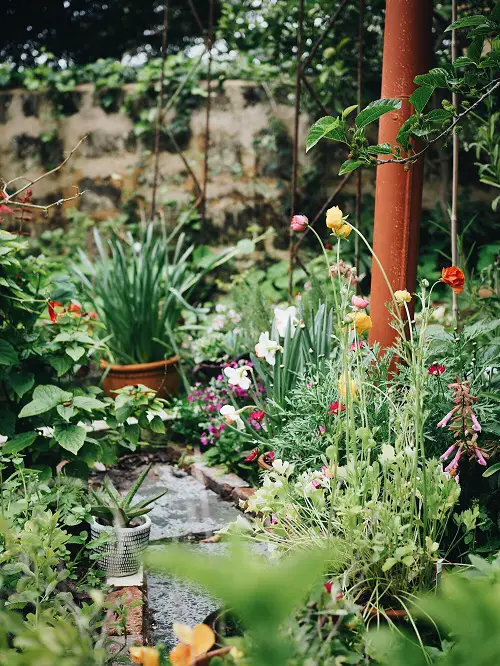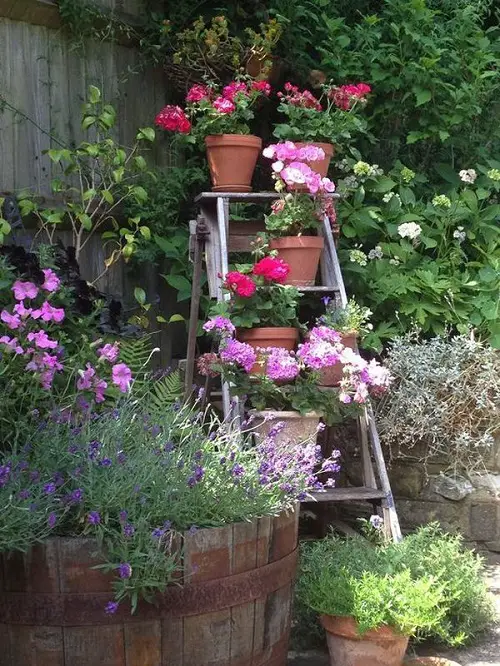A Chaotic Garden expands the idea of maximalism, making sure you use every nook and corner of it!

If you like the concept of having plants and figurines at every open space in the yard, chaotic garden is something your would absolutely love!
What is a Chaotic Garden?
Chaotic garden can be best described as an arrangement, where things are put in a random order with no planning as such. You allow plants to grow naturally, which also makes the yard to have a more jungle like look. This is quite opposite to the gardens that are meticulously planned and designed.
- A chaotic garden may have a diverse range of foliage and flowers with herbs, vegetables or even weeds!
- These types of arrangements may have different decorative elements, where you can use different structures to complete a predefined look or a theme.
- In many chaotic gardens, there may be no theme at all! The goal is to let the plants be, allowing them to grow anywhere, more freely.
How to Make a Chaotic Garden?
Making a chaotic garden is probably the simplest task to do, as you don’t actually have to do anything!
- If you have an empty space or a backyard, simply introduce different type of plants and grow them randomly anywhere, making sure there’s no empty spot left.
- Add elements like rocks, figurines, and use old furniture to introduce a rustic element.
- That’s it! Let the garden thrive as a mini ecosystem. Make sure the plants get proper watering and good sunlight exposure.
Main Elements of a Chaotic Garden
Chaotic garden includes plants of all size, shapes, and color. To achieve the same, add a blend of annuals, perennials, and biennials. Adding different native plants will also ensure you support the biodiversity, while adding an unstructured feel to the garden.
Once you have selected the plants, use different ways to grow them like in containers, raised beds, and hanging baskets. Planting them in old utensils, wheelbarrows and even in items from the bathroom like a tub would also be a good idea!
You can also stick to a particular theme like a mini Zen garden, or a fairy garden.
Do not forget to add birdhouses, bee hotels and small water pond to support the wildlife.
Who Should Consider Making One?

Chaotic gardens are great for people who have less time, are not organized, but love to grow plants and want to have a green space of their own. It is also a good pick for individuals who have an artistic inclination, and are always in a mood to experiment—a chaotic garden provides a continual source of creativity!




